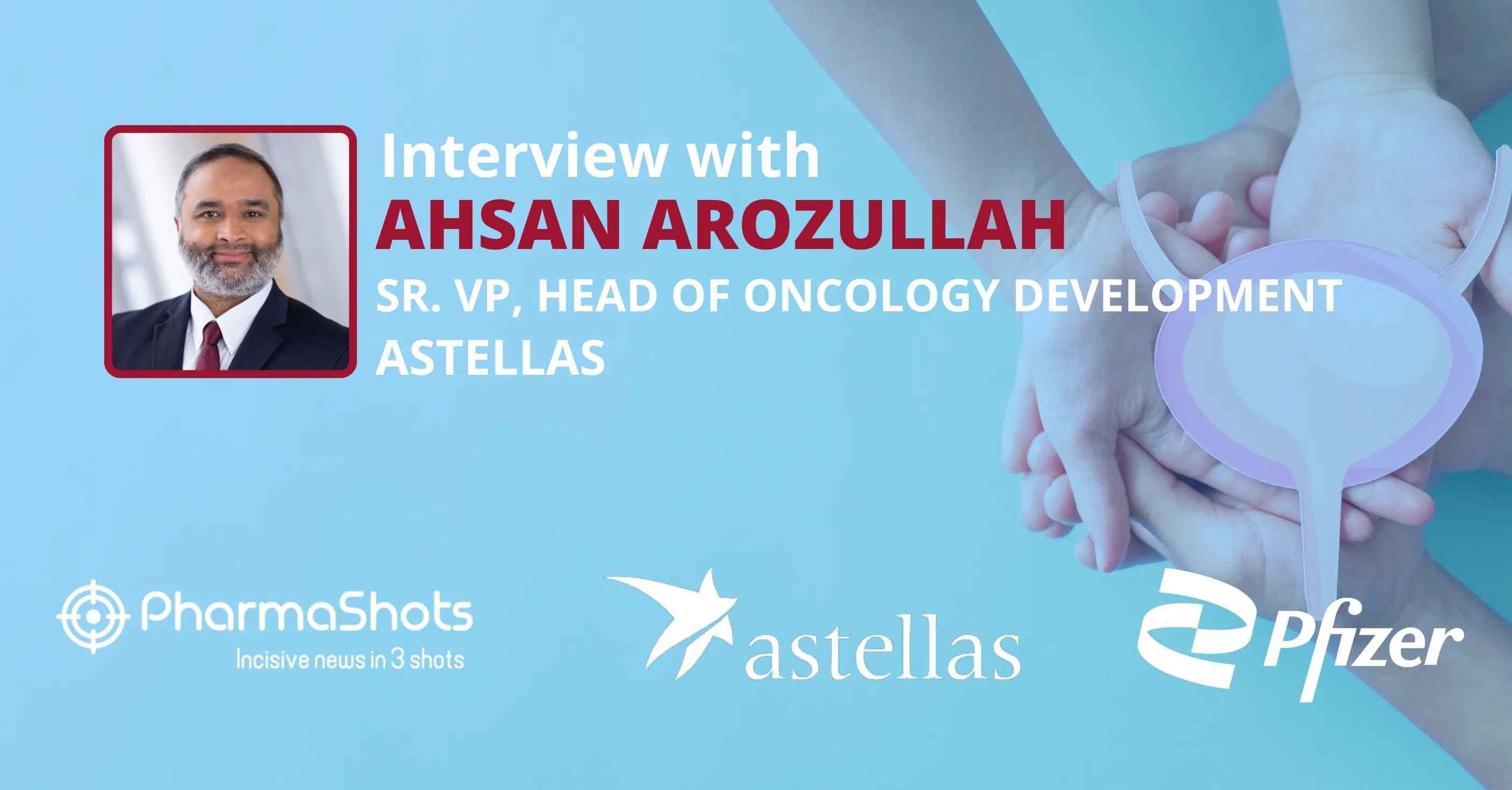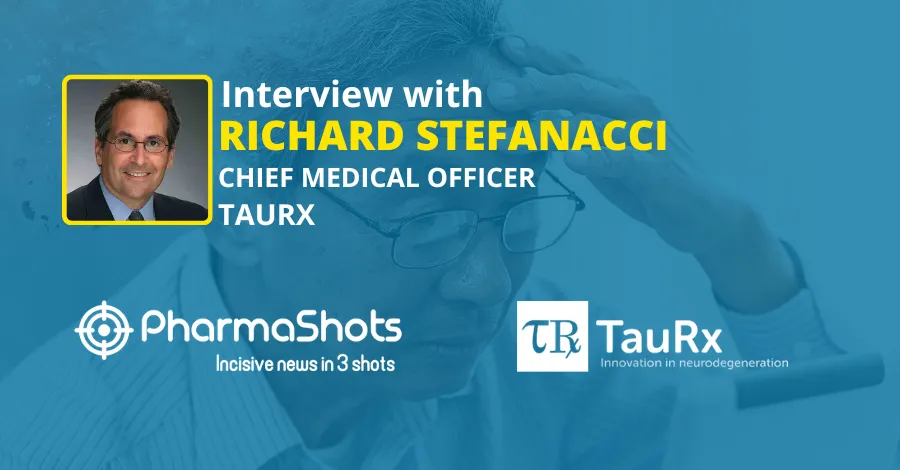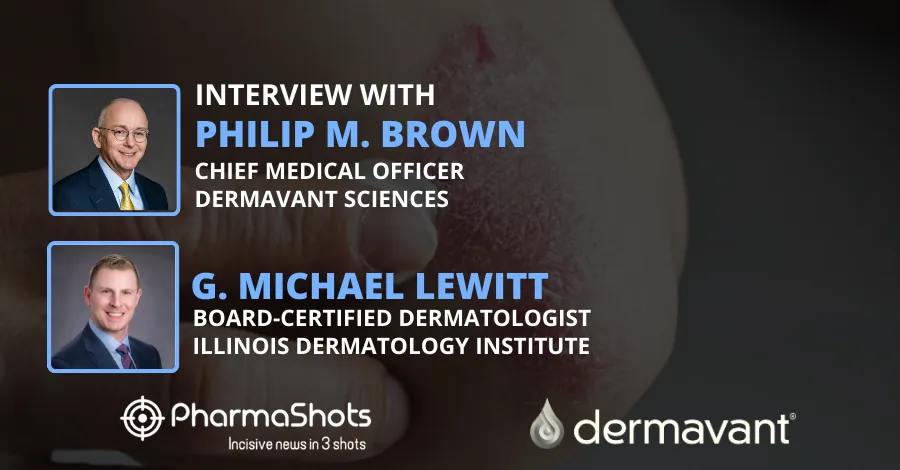
PharmaShots Interview: ProQR's Daniel A. de Boer Shares Insight on Sepofarsen, the First Treatment for Leber Congenital Amaurosis 10 (LCA10)
In an interview with PharmaShots, Daniel A. de Boer of ProQR shared his views on P-II/III pivotal trial of Sepofarsen to treat the root cause of a rare eye disease, Leber congenital amaurosis 10 (LCA10)
Shots:
- The Illuminate P-II/III trial of sepofarsen is a double-masked, randomized, controlled, multiple-dose study to evaluate if sepofarsen is effective at improving vision and is safe and well-tolerated as a treatment of CEP290 mediated Leber congenital amaurosis 10
- ProQR has completed the enrollment of its pivotal trial of Sepofarsen for LCA10 with top-line results expected in H1'22
- Sepofarsen is a ribonucleic acid (RNA) therapy known as an antisense oligonucleotide that aims to restore vision loss in people with LCA10 due to a specific mutation in the CEP290 gene
Tuba: Discuss the design of P-II/III Illuminate study of sepofarsen.

Source: ProQR
Daniel: The Illuminate Phase 2/3 trial of sepofarsen is a double-masked, randomized, controlled, multiple-dose study to evaluate if sepofarsen is effective at improving vision and is safe and well-tolerated as a treatment of CEP290 mediated Leber congenital amaurosis 10 (LCA10). The trial includes 36 patients aged eight years or older who undergo a sham procedure (simulated intravitreal procedure but no study medicine administered) or who receive sepofarsen at a low dose or at the target registration dose through an intravitreal injection. Treatment or sham are administered at the start of the trial, again at three months and then every six months in the first eye. After 12 months, treatment with sepofarsen of the second eye can begin and participants in the sham group can switch to the treatment group. The primary endpoint of this study is mean change from baseline in Best Corrected Visual Acuity (BCVA) at Month 12, at the target registration dose versus sham.
Tuba: Can we have findings of the trial supporting the marketing approval of sepofarsen for patients with LCA10 due to the p.Cys998X mutation in the CEP290 gene?
Daniel: In a Phase 1/2 (PQ-110-001) dose ranging, first-in-human clinical trial of sepofarsen in patients with LCA10 due to the p.Cys998X mutation, significant and durable improvements in vision were observed at Month 12. The target registration dose was associated with a clinically meaningful and statistically significant improvement in vision and had a favorable tolerability profile. A six-month dosing frequency was associated with durable improvements in vision. The response observed at Month 12 in the target registration dose was equal to or greater than the response at the three-month interim analysis and subjects with better vision than light perception (best-corrected visual acuity>LogMAR 3.0) at baseline were more likely to respond to treatment with sepofarsen.
Additionally, the EMA granted PRIME and orphan drug designations to sepofarsen and the U.S. Food and Drug Administration granted fast track, rare pediatric disease and orphan drug designations, underscoring the significant unmet medical need for patients with LCA10.
Tuba: Highlight the working of sepofarsen.
Daniel: Sepofarsen is a ribonucleic acid (RNA) therapy known as an antisense oligonucleotide that aims to restore vision loss in people with LCA10 due to a specific mutation in the CEP290 gene. This p.Cys998x mutation is the most common mutation that causes LCA10. The mutation leads to a mistake in the CEP290 RNA and interferes with a process known as splicing. Therefore, the cell cannot use the RNA to produce a working CEP290 protein that is essential for vision. Sepofarsen binds to the mutated CEP290 RNA to enable correct splicing so that cells in the retina can produce the key protein as they normally would.
Tuba: How do you feel about the development status of sepofarsen so far?
Daniel: Having recently completed enrollment of the pivotal Illuminate Phase 2/3 trial of sepofarsen and having surpassed our enrollment target, we are looking forward to sharing top-line results in the first half of 2022. If approved, sepofarsen has the potential to be the first therapy to treat the underlying cause of this disease and address the high unmet medical need for patients who would otherwise face blindness.
Tuba: Can we have an overview of the epidemiology of Leber Congenital Amaurosis 10 (LCA10)?

Source: ProQR
Daniel: LCA is the most common genetic cause of childhood blindness. The broader LCA occurs every two to three births per 100,000 births and within this number, CEP290 mediated LCA10 diagnosis represents approximately 20-30 percent of all LCA patients.[1] Approximately 2,000 people in the Western world have LCA10 because of the p.Cys998X mutation.
Tuba: Is ProQR Therapeutics planning to evaluate the potential of sepofarsen in other diseases?
Daniel: Our RNA therapies are highly targeted and designed for a specific mutation. This means sepofarsen will not work for other diseases. However, our unique proprietary RNA repair platform technologies can be applied to many genetic diseases. We have built a broad pipeline of RNA therapies for inherited retinal diseases based on these technologies. We are always looking at ways to grow our pipeline with patients and loved ones in mind.
Tuba: Why do you think RNA therapy can help to stop or reverse vision loss?
Daniel: An RNA therapy is designed to correct the mistake, or mutation, in the RNA of someone with a genetic disease. By correcting the mistake, the RNA can then be used to create the protein that the cell needs, taking away the underlying cause of the disease.
Our RNA therapies use antisense oligonucleotides, short stretches of synthetic RNA, which are specifically designed to correct the underlying cause of the disease in a person's RNA to stop disease progression or even reverse symptoms.
RNA therapies do not interfere with the genetic makeup of patients and any changes made to RNA are reversible, reducing the risk of permanent side effects. Other approaches like gene therapy inserts a new gene that is unregulated and may lead to overexpression of the protein. RNA therapy enables the body to create the protein without the risk of overexpression.
RNA therapies work best if delivered directly to the affected organ. In retinal diseases, RNA therapies can be injected into the eye, allowing the drug to be distributed to the entire retina, which is where the therapy is needed.
Tuba: What are ProQR's other efforts to help children, adults, and families affected with rare inherited retinal diseases?
Daniel: We take pride in our partnerships with over 20 retinal patient organizations including Foundation Fighting Blindness and Sofia Sees Hope, an LCA-specific patient group based on the east coast of the U.S. Through working with these advocacy groups, we are able to speak to patients living with LCA10 and their families and caregivers to better understand their needs and help raise awareness about LCA10 and the unmet need for improved treatments. ProQR talks are a series of podcasts that we run to discuss topics of interest to the community. We have a strong patient focus which means we try to integrate their voice into our decision-making throughout the drug development process as we believe that is crucial to our success.
Tuba: What are your other pipeline products for rare genetic diseases?
Daniel: We have built a platform to efficiently discover and develop RNA therapies for genetic eye diseases in order to stop or reverse vision loss. In addition to sepofarsen, we are advancing RNA therapies as potential treatments for USH2A and RHO mediated retinitis pigmentosa, usher syndrome type 2 and TCF4 mediated Fuchs endothelial corneal dystrophy. We have numerous programs in the discovery stage targeting other mutations causing Leber congenital amaurosis, retinitis pigmentosa and Stargardt disease.
Tuba: Discuss the journey of ProQR since 2012. What motivates you to work in this field that currently have no treatment options?
Daniel: From the day our company was founded in 2012, our mission has been to help people living with rare diseases that currently have no treatment options. This remains the sole focus of our company today.
We are working diligently to achieve our goals and are proud of our recent achievements, including enrollment completion of the pivotal Illuminate Phase 2/3 trial, which is intended to support application for marketing approval. This may lead to the first approved therapy to treat LCA10. At the same time, we have advanced other programs and our dedicated team works tirelessly to address the urgent need for new treatment options for inherited retinal diseases.
After learning my newborn son was diagnosed with cystic fibrosis, an incurable rare genetic disease, I sought help from experts in the field of drug development and formed ProQR to help people like him. Our work provides hope for thousands of patients and families affected by rare genetic diseases.
Main Image Source: Lca Study
About Author:

Daniel is our Founder and Chief Executive Officer since 2012. Daniel is a serial entrepreneur and passionate advocate for rare disease patients.
Related Post: ViewPoints Interview: PGDx's Megan Bailey Shares Insight on the Partnership with QIAGEN and Almac
Tags

This content piece was prepared by our former Senior Editor. She had expertise in life science research and was an avid reader. For any query reach out to us at connect@pharmashots.com













